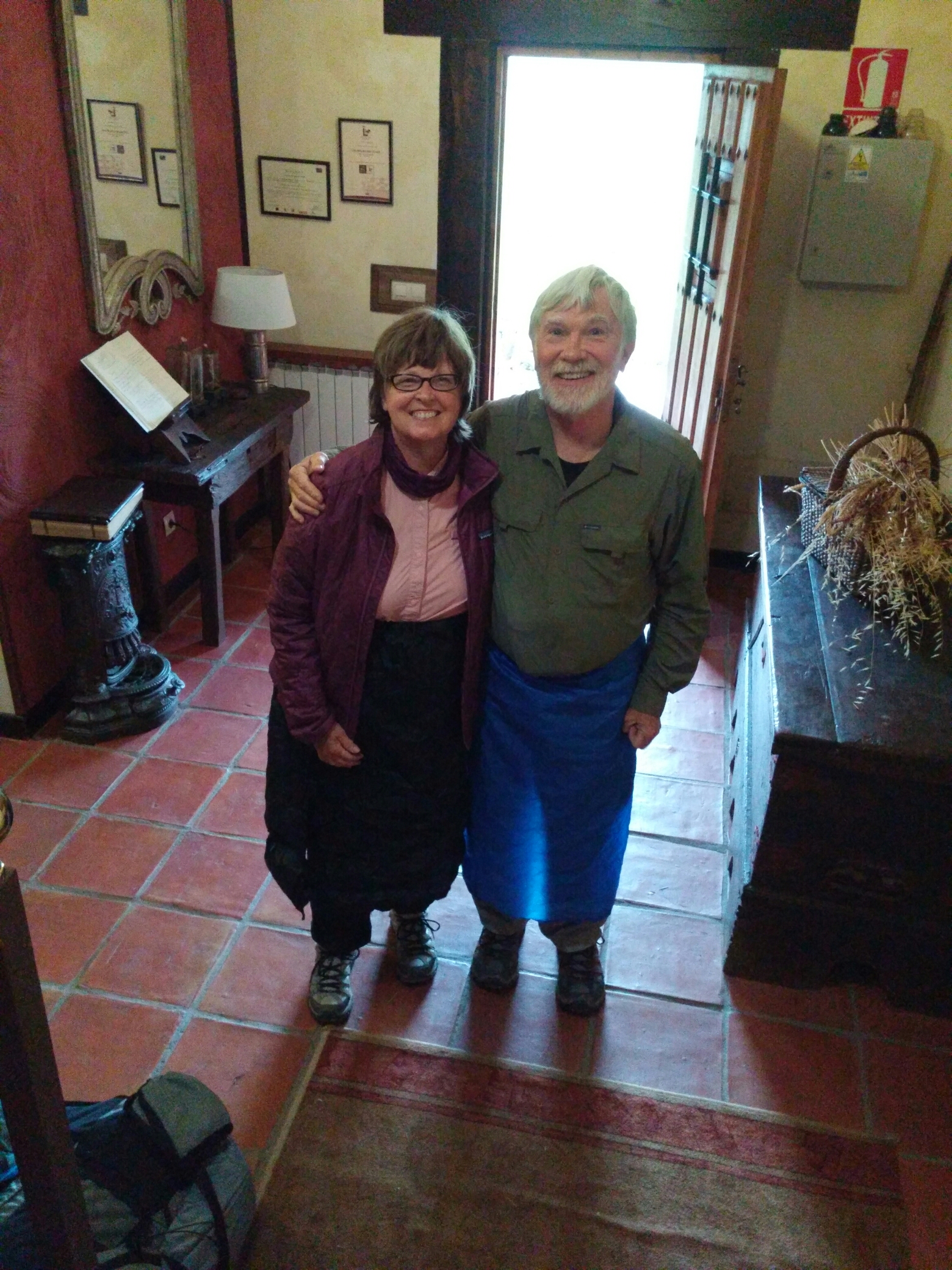
… Ready to face the rain in our rain kilts.
And by the fire:
Our Half-Speed Camino
Full question: Please describe the different types of accommodations: Casa rural? Albergues? Pilgrim’s hostel? I guess I know what a hotel is… Maybe not.
Charlie. An albergue is basically a dormitory or youth hostel, that is, it is a large room with from four to sometimes over 50 bunk beds. The bed is just a covered mattress. The pilgrim uses a sleeping bag or a sheet sleeping bag which might be enough in the summer. Many but not all albergues provide blankets. They usually provide pillows also. The bathrooms are communal and have showers.
So they are very basic but the price is right. Usually they are 5 to 8 euros, at about $1.30 a euro.
There are common areas to hang out in. They usually provide places to do laundry and often kitchens to cook your own food in.
I would guess that 90% of pilgrims stay in albergues 90% of the time.
One of the big advantages of albergues is the socialization they allow. You talk with a wide range of people and often gather in groups and trade Camino stories. Most everyone wants to chat and everyone is included.
The major complaint about albergues is snoring. Earplugs are a necessity but often they don’t help that much. Also people get up early, like before 6, and make noise and sometimes even turn on the lights.
Obviously there is also a lack of privacy. Men and women are not separated. (We recently heard a woman complaining about Spanish men in their underwear.) There is also a lack of personal space, usually you just have your bunk.
We have only stayed in many-to-a-room albergues a few times and I did not like it at all but clearly we are different because, as I said, almost everyone stays in albergues.
We have noticed changes even from last year to this year. More albergues have small rooms with 2 to 10 people. More albergues have beds instead of bunks. More albergues provide sheets. Many albergues have private rooms.
Few albergues provide towels. Most people have these micro fiber camping towels which are a miracle of materials science but still not that great.
We have stayed in private rooms in albergues about a third of the time. They are about the same as an inexpensive hotel or hostal. We like them because we get to socialize with other pilgrims and sometimes have group meals.
The rest of the time we stay in a place that is basically a hotel. Spain has a confusing array of names for them. Hotel generally means something like a hotel in the US, that is, you get towels and soap and little packets of things. We have stayed in 4 or 5 of these and they cost 50 to 75 euros for the one or two star places we stay.
Normally we stay in a hostal which is a level below a hotel, although there is overlap and there are one and two star hostals which are nicer. The rooms are smaller and plainer but you do get sheets and towels. These cost in the range of 30 to 45 euros.
Often we stay in a casa rural which is basically a B&B but sometimes you have a kitchen to use so you can make your own meals. We have stayed in two of these that were really really nice with great meals.
It is unusual for pilgrims to always stay in private rooms like we do but it works for us and we enjoy the trip a lot more.